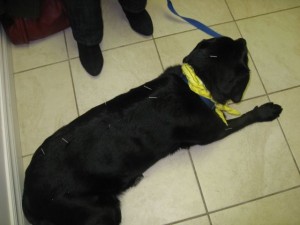 According to traditional Chinese thought the health of the body is dependant on the strength and the flow of Qi (Vital Energy). Each human and animal is born with a fixed amount of Jing (Vital Essence) at birth. Jing is spent in the work of living. The Jing is supported and expressed by the movement of Qi throughout the body via a system of channels (also called meridians). Qi is replenished by food and air (oxygen). These channels flow on the surface of the body and also deep within the body connecting all organs and tissues in a vast network. Disease can arise when there is an imbalance or disruption in the flow of Qi through these channels. Certain areas along the channels that travel the surface of the body provide access to the Qi and allow a trained acupuncturist and tui-na practitioner to affect the flow and quality of Qi in the body.
According to traditional Chinese thought the health of the body is dependant on the strength and the flow of Qi (Vital Energy). Each human and animal is born with a fixed amount of Jing (Vital Essence) at birth. Jing is spent in the work of living. The Jing is supported and expressed by the movement of Qi throughout the body via a system of channels (also called meridians). Qi is replenished by food and air (oxygen). These channels flow on the surface of the body and also deep within the body connecting all organs and tissues in a vast network. Disease can arise when there is an imbalance or disruption in the flow of Qi through these channels. Certain areas along the channels that travel the surface of the body provide access to the Qi and allow a trained acupuncturist and tui-na practitioner to affect the flow and quality of Qi in the body.

Velvet getting her acupuncture treatment
These areas are the acupuncture points. Modern research has shown that these specific points have a higher density of nerve endings, immune-cells, small arterioles and lymphatic vessels than the surrounding tissue. By stimulating these points, sometimes located far from the site of symptoms, the veterinary acupuncturist and tui-na practitioner can assist the body’s innate ability to heal itself by balancing its Qi.
This balancing is now known to be mediated primarily via beta-endorphins (the body’s own pain-relief factor), serotonin (associated with mood), and similar neurotransmitters. Other mechanisms including hormonal factors that reduce inflammation are also involved. The acupuncture or tui-na massage stimulation adjusts blood circulation, relieves muscle spasm, alters hormone levels and the function of organs.













